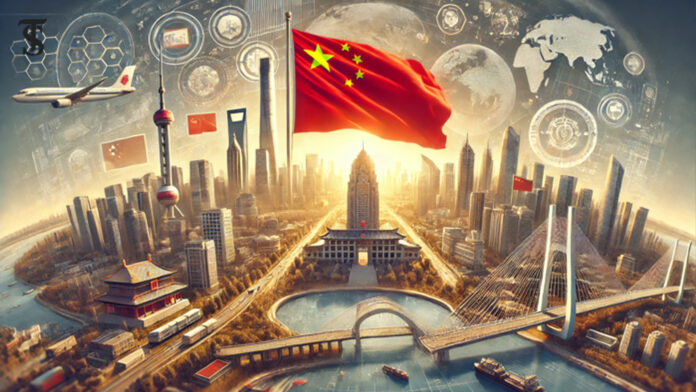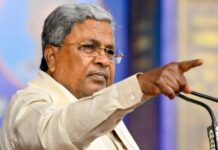The global conflict arena—Ukraine’s grinding war, Gaza’s smouldering ruins, the India-Pakistan limited Conflict and the new Israel-Iran showdown—are stealing every headline. Yet behind the smoke and noise, a quieter dynamic is unfolding: major powers are bleeding attention, while China, almost by default, keeps collecting strategic dividends. It may not be the puppeteer of these fires, yet it has played its cards well enough that each blaze burns to Beijing’s advantage—even as the Chinese house itself groans with youth unemployment, political dissension and an extraordinary purge of senior generals.
A Multipolar World and US Distractions
Washington’s long-promised “pivot” to the Indo-Pacific was never meant to be three‑front grand strategy, yet that is where the United States now sits:
Europe: two years of shovelling just enough weapons into Kyiv to keep Russia tied down, but never enough to end the fight.
Middle East: an expanding air/naval campaign against Yemen’s Houthis and contingency plans for deeper strikes if Iran miscalculates.
Indo-Pacific: the region Washington says matters most—yet receives the least day-to-day bandwidth.
For Beijing, every extra U.S. destroyer in the Red Sea is one less shadowing the South China Sea. That is opportunism, not orchestration—but opportunity matters more than authorship.
Middle East Conflicts: Strategic Cost Beyond Borders
Few regions magnetise U.S. attention like the Levant and Gulf. Israel lacks the stealth bombers and 30-ton bunker‑busters needed to finish Iran’s nuclear sites; only America owns those assets. Pressure is already mounting in Washington to “take the shot”. Meanwhile, the Houthis’ missile harassment in the Red Sea guarantees U.S. forces remain on station, escorting tankers and launching reprisal raids.
Russia’s total commitment to Ukraine, paradoxically, makes this easier. With Moscow pinned, neither Syria nor Hezbollah can expect decisive Russian back‑up, giving Washington and Jerusalem a freer hand to redraw threat lines from Lebanon to Tehran. The more the U.S. digs in here, the less bandwidth it has for Asia. That is the gap in which China quietly grows.
China’s Shadow Strategy and Internal Fragilities
Beijing may not be a master architect, but its shadow wars and strategic play are more dangerous. China is the beneficiary of fuelling global distraction:
Diplomatic cover. At the UN and via the “Axis of Upheaval” rhetoric, Beijing offers Moscow and Tehran just enough oxygen to resist Western pressure. However, the relationship is more of opportunism than strategic bindings.
Selective logistics. Dual‑use electronics for Russia, precision components via third parties for Iran—support just shy of an overt alliance.
Narrative warfare. Beijing presents itself as the “responsible stakeholder” amid Western bombing campaigns, courting the Gulf and Global South.
Israel-Iran War. In the June 2025 Israel-Iran clash, China stayed in the shadows—urging calm while quietly securing its interests. As Iran’s key economic partner, Beijing didn’t want war disrupting trade or oil routes. But it also used the West’s distraction to tighten its grip in Central Asia and the Indo-Pacific. Calm on the surface, calculated underneath.
Notably, even amid tensions and trade decoupling narratives, a trade deal that restored a fragile truce in the U.S.-China trade war, removing Chinese export restrictions on rare earth minerals and allowing Chinese students access to U.S. universities. This is the strength of Chinese dependency as a strategic leverage.
Despite outward assertiveness, Beijing is facing internal turmoil on several fronts. Youth unemployment percentage exceeded 20% before the data disappeared in the Chinese style, indicating a possible domestic social strain that could be politically disastrous. Beyond the economy, the People’s Liberation Army (PLA)—seen as the bedrock of party power—has been shaken by unprecedented purges, including the removal of senior commanders in the Rocket Force and even a Vice Chair of the Central Military Commission. These are not routine anti-corruption moves; they indicate deep mistrust within the highest military and political echelons.
President Xi Jinping’s power may appear monolithic, but recent patterns point to a more contested consolidation. From abrupt disappearances of ministers to sudden policy U-turns, the Chinese political machine is showing signs of internal dysfunction. Chinese economy while boosting a narrative of unprecedented growth, actually remains weak with real estate crashes, sluggish consumption, and faltering investor confidence. This internal fragility explains why China avoids overt military involvements and prefers a shadow power play: sustaining global distractions at minimal cost while avoiding exposure that could unravel internal stability.
India and the Shifting Balance in Asia
Amid the dust storms, India is the competitor, and China wants it to be sidelined. The method is subtle containment, not open war:
Pakistan as a Pressure Valve. Islamabad’s sudden relevance—the only Muslim nuclear state—means Washington, Moscow and Beijing will all court it as the Israel-Iran crisis evolves. A warmer U.S.–Pakistan axis could see renewed pressure on India over Kashmir or even the Indus Waters Treaty.
String‑of‑Ports Economics. Gwadar, Hambantota, Kyaukpyu—each node restricts India’s manoeuvre space in the maritime domain.
Diplomatic Dilution. Fires in West Asia sap Indian bandwidth just as surely as they sap America’s; energy security and diaspora interests pull New Delhi’s gaze westward while Beijing works east.
Bangladesh Bonhomie. The new caretaker dispensation in Bangladesh has been increasingly attracted by the Chinese chessboard and now become inimical to India, posing a new threat to the NE region. Thus creating for India a multidirectional pull.
India’s celebrated “strategic autonomy” once looked savvy. Today, prolonged fence‑sitting risks handing other players the initiative—and initiative is the coin of power in a fluid order.
Pakistan’s Geostrategic Leverage in Crisis
Despite economic near‑bankruptcy, Pakistan’s utility soars when Middle‑East identity politics ignite. The role of UNSC and the bailout by IMF, WB and ADB are suggestive of Pakistan’s utility in global positioning. Islamabad has already pitched the Israel-Iran clash as an Islamic cause, talked up OIC activism, and dismissed chatter about nuclear “options.” History suggests it will do nothing that jeopardises U.S. interests in the Gulf, no matter what Beijing whispers. Everyone—the U.S., China, Russia—will woo Islamabad for their ends. That three-way courtship could squeeze India in uncomfortable ways.
Enduring Unipolar Capabilities, Multipolar Postures
Talk of American decline hides a blunt fact: Washington still decides which fires matter. The U.S. can deploy B‑2s over Iran or carrier strike groups off Taiwan—actions few others can match. Even China, with its trending navy counts, cannot yet replicate the combination of logistics, basing and allied trust that Washington wields. India’s diplomacy often calibrates not to offend the Americans—tacit proof of lingering unipolar gravity.
Yet power is also perception. Repeated global distractions project U.S. exhaustion, embolden adversaries and tempt fence-sitters. That perception—not any battlefield defeat—is what Beijing’s shadow strategy tries to nurture.
The Real Objective: Stretching Rivals, Not Striking First
China’s grand design is not to light every fire; it is to let those fires burn long enough that the U.S. never truly pivots, and India never fully ascends. The strategy’s genius lies in its economy: Beijing invests in diplomatic cover and limited matériel, not carrier groups. It moves in shadows, letting others spend blood and treasure.
But shadows lengthen only when light is elsewhere. If Washington and New Delhi regain strategic focus—closing out peripheral wars, investing in collective deterrence, and exposing Beijing’s internal fragilities—the quiet beneficiary could find the board less welcoming.
Strategic Focus is the Currency of Power
Great‑power contests are won by shaping the board, not winning every square. Beijing is shaping it in silence, accruing leverage while its rivals stamp out fires. It profits by default, even as its economy and military endure crises of confidence.
For India, fence-sitting is no longer a safe perch. For the United States, attention is now its scarcest strategic asset. For China, the danger is that its internal fractures burst into the open before the distractions abroad have finished their work.
The match is not decided. But the clock is ticking—and the player spending the least pieces may yet claim the quietest checkmate.
LT GEN AB SHIVANE, PVSM, AVSM, VSM (RETD)
Lieutenant General A B Shivane, PVSM, AVSM, VSM (Retd) is an NDA alumnus and a decorated Armoured Corps officer with over 39 years of distinguished military service. He is the former Strike Corps Commander and Director General of Mechanised Forces. As a scholar warrior, he has authored over 200 publications on national security and matters of defence, besides four books and is an internationally renowned keynote speaker. The General was a Consultant to the Ministry of Defence (Ordnance Factory Board) post-superannuation. He was the Distinguished Fellow and held COAS Chair of Excellence at the Centre for Land Warfare Studies 2021-2022. He is also the Senior Advisor Board Member to several organisations and Think Tanks.








